Useful properties and contraindications of white currants for women
White currants with translucent, almost colorless berries are not as popular among gardeners as other members of the Gooseberry family, but no less useful. Let's consider how the fruits and leaves of this crop will help women, what harm it can cause, and what to prepare from the sweet and sour berries.
Chemical composition of white currant
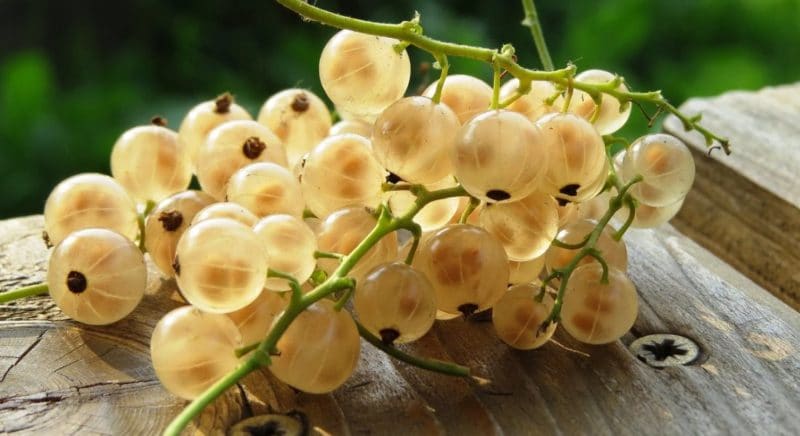
Berries consist of approximately 80% water, calorie content - 42 kcal per 100 g. Nutritional value:
- proteins - 0.5 g;
- fats - 0.2 g;
- carbohydrates - 8 g;
- pectin - up to 1 g;
- dietary fiber - 3.4 g;
- ash - 0.5 g.
Vitamins (per 100 g):
- B4 - 7.6 mg;
- B6 - 0.1 mg;
- C - 40 mg;
- K - 11 μg;
- E - 0.3 mg;
- PP - 0.3 mg.
Mineral composition (per 100 g):
- calcium - 36 mg;
- magnesium - 9 mg;
- iron - 0.5 mg;
- zinc - 0.23 mg;
- copper - 107 mcg;
- manganese - 0.186 mg;
- potassium - 270 mg;
- phosphorus - 23 mg;
- sodium - 2 mg;
- sulfur - 14 mg.
White currants contain the maximum amount of useful substances during the ripening period.
What are the benefits of white currants for women?
The value of the plant for the female body is determined by the presence of pectin, ascorbic acid and other vitamins, organic acids, and minerals.
This dietary product contains few calories and is easily absorbed by the body.
Berries
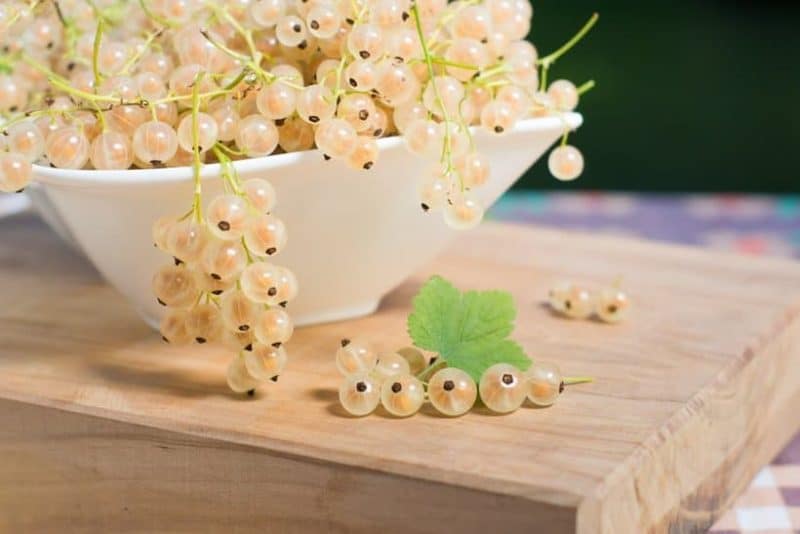
Eating berries (primarily raw) contributes to:
- improving blood composition, saturating it with oxygen;
- cleansing blood vessels, strengthening their walls, increasing elasticity;
- cell renewal;
- slowing down the aging process;
- lowering cholesterol levels;
- increasing collagen production;
- strengthening the heart muscle;
- normalization of the digestive tract with a mild laxative effect;
- reducing the manifestation of allergic reactions to other foods;
- removal of toxic substances and heavy metal salts from the body;
- slowing down the development of cancer cells;
- removal of bile and cleansing of the liver;
- prevention of hormonal disorders;
- suppression of urinary tract infections;
- stabilizing the water balance in the body, removing excess fluid;
- prevention of diabetes mellitus;
- clearing mucus and relieving swelling in respiratory diseases;
- preventing iron deficiency anemia;
- increasing visual acuity and preventing the development of cataracts;
- normalization of blood pressure;
- activation of the immune system, increasing the body's resistance to infectious and viral diseases;
- strengthening bones;
- normalization of the reproductive system;
- improving the structure of dental tissue.
The benefits of white currants are relevant for women living in areas with high levels of air pollution, as well as those suffering from heart disease, diabetes and being overweight.
Almost transparent berries are not only a valuable food product, but also an excellent cosmetic product, the special benefits of which are due to the absence of coloring substances in its composition. The pulp and seeds are used to prepare face masks, scrubs and peels. The funds help:
- relieve inflammation and get rid of skin rashes;
- normalize the functioning of the sebaceous glands;
- moisturize the skin and maintain its elasticity;
- smooth out facial wrinkles;
- remove dark circles and puffiness under the eyes;
- activate cell regeneration, slow down aging;
- reduce the manifestations of age-related pigmentation.
Currant oil is included in tonic and anti-aging skin products.
For cosmetic purposes, you can use not only fresh, but also frozen berries.
Leaves
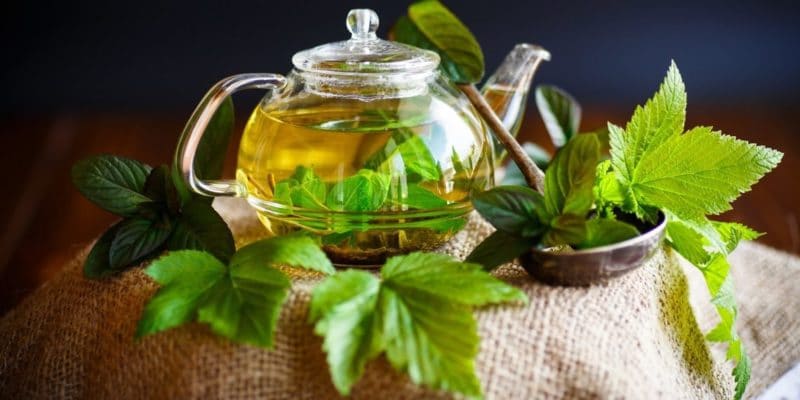
Bactericidal properties white currant foliage, rich in vitamin C, zinc, selenium, tannins, flavonoids, essential oils and organic acids, ensure its use in:
- rejuvenating nourishing facial masks;
- salads to strengthen gums and cleanse the mucous membranes of the oral cavity.
Infusions are made from the leaves and added to teas, which:
- replenish the lack of vitamins in the body;
- strengthen nerve cells, tone;
- normalize body temperature during colds;
- remove sputum in diseases of the upper respiratory tract;
- cleanse the body of toxins and radionuclides;
- have a diuretic and choleretic effect;
- prevent cystitis;
- promote scarring of ulcers;
- used in the treatment of anemia;
- prevent the appearance of sand and stones in the gall bladder;
- act on the body as a general strengthening agent.
The leaves are added to the teapot when brewing regular tea, put in jars with pickles and marinades.
From the branches of the plant, which contain large amounts of essential oil and flavonoids, medicinal tinctures, teas and extracts are made that help with:
- kidney diseases;
- conjunctivitis;
- scurvy;
- diathesis;
- dermatitis.
Contraindications and possible harm
In addition to the beneficial properties of white currants for women, there are also contraindications. Most of them are associated with a high content of ascorbic acid and the presence of vitamin K, which increases blood clotting.
Consuming the product in large quantities is contraindicated if:
- acute gastritis with high acidity;
- stomach and duodenal ulcers;
- thrombophlebitis;
- hemophilia;
- post-stroke condition;
- diseases of the pancreas and liver;
- hepatitis;
- individual intolerance.
During pregnancy and breastfeeding, it is better to consume fruits with caution, introducing them into the diet gradually to avoid possible individual intolerance in the child.
Important! Due to the high content of essential oils, currant leaves are contraindicated for pregnant women. Breastfeeding women should also avoid drinking tea with them.
Excessive consumption of white currants, especially if there are contraindications, can:
- induce vomiting;
- lead to pain in the gastrointestinal tract;
- cause colic in the intestines and bloating;
- aggravate the condition after a stroke or thrombophlebitis.
Cooking recipes
The valuable properties of berries are partially preserved after heat treatment, so they are beneficial not only when consumed fresh, but also as part of juices, compotes, fruit drinks, jams, and preserves.
Reference. To prevent the vitamin value of white currants from being reduced by more than half, the processing temperature should not exceed 100°C.
For preparations, the presence of vitamin C in fruits is important - a natural preservative that ensures long-term storage of processed products.
The pectin contained in berries with gelling properties allows you to make excellent jam or jam.
Compote
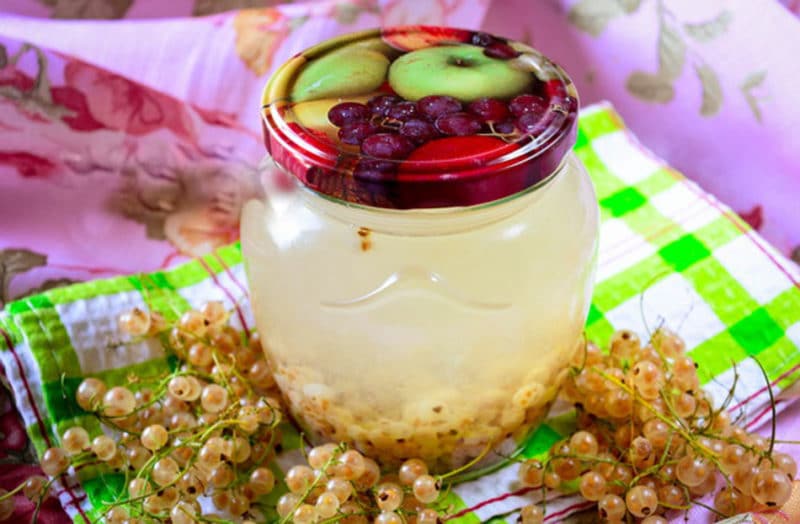
To prepare fresh fruit compote for the winter, for 1 3-liter jar you will need:
- 500 g white currants;
- 350 g sugar;
- 2.5 liters of water.
Preparation procedure:
- Place the berries along with the twigs in a colander in separate portions and rinse under running water.
- Pour water into a saucepan and put on fire.
- Pre-sterilize jars and lids over hot steam.
- Place a colander with a small amount of berries in boiling water for 2 minutes.
- Transfer them to prepared containers, filling 1/3 full.
- Cook the syrup by adding sugar to the water and bringing to a boil.
- Pour the prepared syrup over the currants in the jars.
- Cover the containers with lids and roll up.
- Turn over, wrap and leave until cool.
- Place jars of compote in a cool storage place.
To give white currant compote a brighter color, replace half of the berries with red fruits or add cherries or raspberries.
In the summer, you can cook a thirst-quenching assorted compote without preserving it. Ingredients:
- 100 g white and 150 g black currants;
- 150 g each of gooseberries and plums;
- 100 g raspberries;
- 250 g apricots;
- 350 g sugar;
- 3.5 liters of water.
Rinse the fruits, drain the liquid, and place in a saucepan. Add sugar, add boiling water, cook for 2 minutes. Wait until the drink cools down and infuses. Drink by adding 1 ice cube to the glass.
Jam
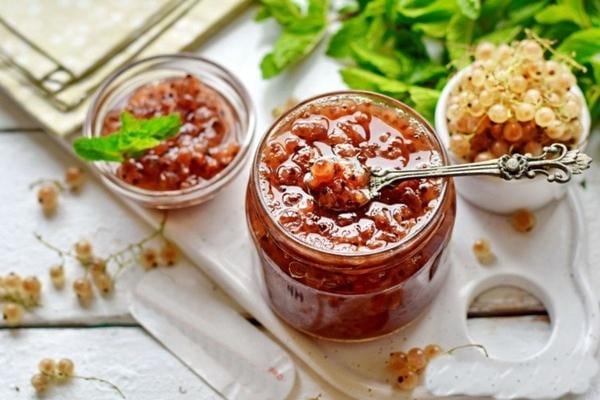
To make jam according to the classic recipe you will need:
- white currant fruits - 1 kg;
- water - 2 tbsp;
- sugar - 1.2 kg.
Preparation:
- Rinse the berries, placing them in a colander in small batches.
- Remove twigs and spoiled fruits.
- Dry carefully by laying it on a towel.
- Place in a container, adding 1 kg of sugar.
- Place in a cool place for 8 hours.
- Mix the rest of the sugar with water and prepare syrup.
- Place the fruits that have released their juice into a bowl with boiling syrup and continue cooking until it boils, then immediately reduce the heat.
- Continue cooking for about 7 minutes until the berries become transparent.
- Pour the hot jam into pre-sterilized jars and screw on the lids.
- Turn upside down and wrap in a warm cloth.
- After cooling, transfer to a place suitable for long-term storage (pantry or cellar).
In addition to regular jam, aromatic jam with a jelly-like consistency is prepared from white currant berries by adding 250 g of sugar to 0.5 kg of fruit:
- Remove stems from currants and rinse.
- Grind into a paste using a blender.
- Rub the mixture through a sieve.
- Stir in sugar and place over low heat, bringing to a boil.
- While hot, pour the jam into pre-prepared sterilized jars and screw on the lids.
In order for the jam to turn out to be of high quality, it is important to remove it from the heat in time, as soon as the mass begins to boil.
This is interesting:
How and with what to spray currants in the spring against pests and diseases
Step-by-step instructions on how to prune currants in the spring for a good harvest
Conclusion
Vitamin-rich fruits and leaves of white currant are useful for women both as a product and as a cosmetic product. Although berries partially lose their valuable properties during processing, consuming them not only fresh from the bush, but also in the form of jam, compote and other preparations will benefit the body. Harm is possible only if there are contraindications, the presence of which must be taken into account.